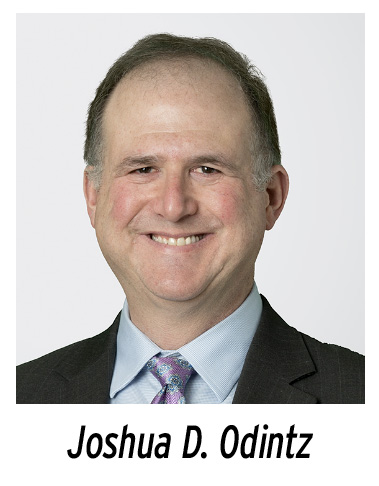“He that pays last payeth but once.”1
The Biden administration published a flurry of tax regulations in its final days. Most of the final regulations implemented the Inflation Reduction Act, President Joe Biden’s economic legacy. However, one surprise was the finalization of the disregarded payment loss (DPL) regulations (hereinafter the DPL final regulations or DPL rules). Some view the DPL final regulations as a backdoor attack on the check-the-box regulations.
This article describes the DPL final regulations, some of the key changes to the proposed regulations, and authority questions raised in comments to the proposed regulations.
The DPL Final Regulations: An Overview
The DPL final regulations are designed to address specific fact patterns where a disregarded payment entity (DPE) makes a payment of interest or royalties to a domestic corporation. To address concerns regarding the potential for a deduction abroad and no income inclusion in the United States by the owner of the DPE, the DPL rules create a faux net income or loss statement for the DPE based on limited items of income and deductions. The DPE computes a balance sheet of income and deductions based on royalties, interest, and structured payments (effectively, interest payments). Income and deductions from other items, such as the sale of inventory, are ignored. If the DPE is in a loss position based on the balance sheet of three items, then the DPE owner has a DPL.
A DPE is an entity that is disregarded for US tax purposes and is a foreign tax resident, and the DPE owner directly or indirectly owns interests in the DPE. The DPE can be domestic or foreign, and it can also be a foreign branch. The DPE rules also apply to a dual-resident corporation.
The relevant royalties, interest, and structured payments are payments that give rise to deductions or income of the DPE under foreign tax law and are disregarded for US tax purposes. However, if the items were regarded, they would be royalties, interest, or structured payments.
The definition of “interest” is expansive. Interest includes a deduction with respect to equity, including deemed equity, a notional interest deduction, or a deduction for an imputed interest payment with respect to a debt instrument (for example, a deduction for imputed interest for an interest-free loan). These types of interest payments are described in detail in various Organisation for Economic Co-operation and Development (OECD) anti-
hybrid reports.2
If the DPE has overall income or disregarded payment income, then the DPE owner reports the net income. If the DPE has an overall loss or a DPL, then the DPL is a suspended loss that is carried forward, unless there is a foreign use.
When a taxpayer has a DPL, the taxpayer creates a DPL cumulative register and is required to provide an initial certification statement reporting the DPL. The taxpayer must also file annual certifications for a sixty-month period stating that the DPL has not had a foreign use. The initial certification includes the amount of the DPL and a statement that the foreign use has not occurred during the certification period. For each additional taxable year, the taxpayer is required to provide a certification identifying the foreign taxable year of the DPL, that there has not been a foreign use, and that arrangements have been made to ensure that there will be no foreign use of the DPL or, if there is, the DPE owner will be informed of the foreign use.
The certification period ends if the DPE owner no longer owns directly or indirectly the DPE or substantially all of the assets of the foreign branch. The certification period also ends when the DPE owner includes the DPL as income.
If there is a foreign use (a triggering event), then the DPE owner includes in income the full amount of the DPL. A foreign use is a partial or full use of the loss to offset foreign income. Further, the DPE owner creates a suspended deduction that can be used to offset disregarded payment income in future years. If that amount is less than the full amount in the DPL register, then the DPE owner reports the reduction and the amount left in the register, along with other information to be requested by the commissioner.
Similarly, if the DPE owner can release the suspended deduction (for example, by demonstrating overall income for the DPE), then the DPE owner must report the use of the DPL on a statement describing the amount of the DPL used and show the income or loss for each foreign taxable year up to and including the foreign taxable year in which the DPL is allowed.
Key Changes to the Proposed Regulations
The proposed regulations apply for tax years ending after August 6, 2024, with the deemed consent provisions applying for existing DREs after August 6, 2025. In order to provide taxpayers an opportunity to unwind their structures, the final regulations apply to taxable years beginning on or after January 1, 2026. Perhaps this is also a nod to prior concerns expressed by Congress that any changes to address hybrid arrangements should include significant transition periods.
Relief is also provided for royalties paid pursuant to a license agreement executed before the date of the proposed regulations (August 6, 2024). These royalties are exempt from the DPL rules.
Another important change is the elimination of minority interests. The DPL final regulations do not apply to a DPE owner that has a minority interest in the DPE.
The DPL final regulations also include a de minimis exception if the DPE has an active trade or business and the DPL is the lesser of $3 million or ten percent of the deductible items of the DPE.
One of the controversial features of the proposed regulations was a consent or deemed consent to be subject to the DPL rules. The proposed regulations provided that for a DPE that elects to be disregarded or was classified without an election and was formed or acquired after August 6, 2024, the US owner consents to be bound by the DPL rules. The proposed regulations provided an out if the DPE elected to be classified and taxed as an association before August 6, 2025, a year after the date of publication of the proposed regulations.
The deemed consent requirement has created significant confusion and uproar. For example, the New York State Bar Tax Section raised four significant concerns with the deemed consent rules: “
(i) the lack of a requirement of a CTB election for deemed consent, (ii) the expansive concept of ‘indirect’ ownership under the Proposed Regulations, (iii) uncertainty regarding the application of the deemed consent rules to multiple DREs and to members of consolidated groups, and (iv) the prospect of substantial confusion, uncertainty and inconsistent outcomes that the CTB rules were intended to eliminate.”3
In response to these comments, the DPL final regulations do not contain the deemed consent rules.
Commentators recommended against the all-or-nothing approach for foreign use. However, the DCL regulations contain the all or nothing approach, and the DCL final regulations retained the all or nothing approach. Further, if foreign hybrid mismatch rules deny a deduction for a disregarded payment, then such deduction does not give rise to a DPL or foreign use of a DPL.
Commentators also requested integration or coordination for the dual consolidated loss rules and DPL rules. The US Department of the Treasury and IRS rejected this comment because integration would create considerable complexity and administrative burden, even though the DPL rules create significant complexity and administrative burdens for taxpayers.
Authority for the DPL Regulations
In light of the US Supreme Court’s ruling in Loper Bright, taxpayers are raising more challenges to regulations through the comment process. Commenters to the proposed regulations argued that the DPL regulations lack authority for several reasons.
First, the OECD base erosion and anti-abuse project (BEPS) addressed hybrids in the Action 2 final reports.4 The proposed regulations cited the Action 2 Reports as authority for addressing deduction/no inclusion outcomes(D/NI). However, Congress did not adopt the recommends for D/NI outcomes in Sections 245A(e), 267A or 1503(d). In response, the Treasury Department and IRS argue that Section 1503(d) was enacted to prevent double deduction outcomes, and the Action 2 Reports are consistent with long-standing US policy. Query why the Treasury Department and IRS relied on the OECD reports, which are not law.
Section 1503(d) gives authority to the Treasury Department to address dual consolidated losses. Notably, Section 1503(d)(2)(A) defines a DCL as a net operating loss. The Treasury Department previously interpreted the term “net operating loss” to refer to a net operating loss as defined in Section 172. Some commentators argued that a net operating loss does not exist and cannot be manufactured through guidance to deny deductions.
Another commentator argued that Section 7805(a) cannot provide authority for the DPL regulations because they do not relate to any specific Internal Revenue Code provision.
The Treasury Department and the IRS disagreed with all of the challenges to authority because they have an express delegation of authority under Section 7805(a). Section 7805(a) is a general grant of authority that allows the Treasury secretary to issue all needful rules and regulations for the enforcement of the Code.
Commentators argued Section 7701 does not provide a basis for the DPL rules because Section 7701 addresses entity classification and does not authorize income inclusions. One comment referred to Notice 98-11 and that the Treasury Department is limited in implementation rules to undo the check-the-box regulations.
The main authority for the proposed and final regulations is Section 7701. Treasury and the IRS asserted the DPL rules are consistent with the check-the-box regulations, especially to deal with “inappropriate outcomes.”5 The preamble to the final regulations notes the significant increase of hybrid structures—“many of these structures are designed for tax avoidance.”6—and concludes, “Thus, by preventing the check-the-box regulations from enabling inappropriate outcomes, the DPL rules are a reasonable modification of the regulations.”7
The Treasury Department notes the DPL rules are issued under Sections 1503(d), 7701, and 7805(a). They are under Section 1503(d) because the rules use concepts from Section 1503(d) and are designed to prevent the avoidance of the DCL rules.
The reliance on Section 7805(a) offers a preview of future litigation between taxpayers and the government. Can the government bend a statute to its will through a general grant of authority? How can Section 7805(a) be reconciled with Loper Bright, which requires an agency to issue regulations consistent with the best interpretation of a vague statute? Are the DPL regulations consistent with that reading, and can Section 7805(a) allow the Treasury Department and the IRS to write a regulation that is not the best reading of Section 1503(d) to enforce the code?
Conclusion
According to Jesse Livermore, the pioneer of day trading, “Profits always take care of themselves, but losses never do.”8
The DPL final regulations are controversial. The new administration may opt to review regulations and policy calls made by the prior administration. If the new administration wants to reach a different policy outcome, it could withdraw the DPL regulations through notice and comment. It could also delay the effective date to provide more time for the new administration to study the issue.
Congress could also void the regulation under the Congressional Review Act (CRA). The CRA provides an opportunity for Congress to void a final regulation through a joint resolution of disapproval by Congress that must be signed by the president (or Congress can override a veto). If Congress and the president approve a joint resolution of disapproval, then the agency cannot issue a substantially similar regulation. The CRA has never been used for a tax regulation.9
Joshua D. Odintz is a partner in Holland & Knight’s Washington, D.C., office.

Endnotes
- James Howell, Paroimiographia Proverbs, or, Old Sayed Savves & Adages in English (or the Saxon Toung), Italian, French, and Spanish, Whereunto the British for Their Great Antiquity and Weight Are Added (London: Samuel Thomson, 1659).
- ECD/G20, “Neutralising the Effects of Hybrid Mismatch Arrangements, Action 2: 2015 Final Report” (October 2015), and OECD/G20, “Neutralising the Effects of Branch Mismatch Arrangements, Action 2: Inclusive Framework on BEPS” (July 2017) (collectively the Action 2 Reports).
- New York State Bar Association Tax Section, “Report on Proposed Regulations Under Section 1503(d),” Report 1501, October 4, 2024, at 14.
- OECD/G20, “Neutralising the Effects of Hybrid Mismatch Arrangements, Action 2: 2015 Final Report” (October 2015), and OECD/G20, “Neutralising the Effects of Branch Mismatch Arrangements, Action 2: Inclusive Framework on BEPS” (July 2017) (collectively the Action 2 Reports).
- TD 8697 (61 RZF 66584, 66585).
- TD 10026, January 10, 2025.
- Id.
- Jesse Livermore, How to Trade in Stocks (New York: Duell, Sloan, & Pearce, 1940).
- For a good overview of the CRA, see Congressional Research Service, “The Congressional Review Act (CRA): Frequently Asked Questions” (Report R43992), November 13, 2021.




